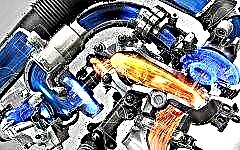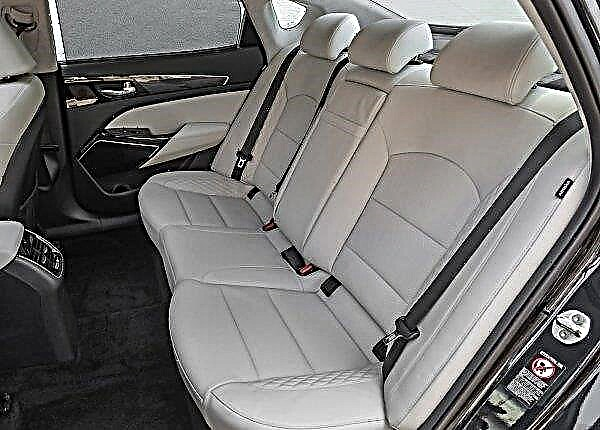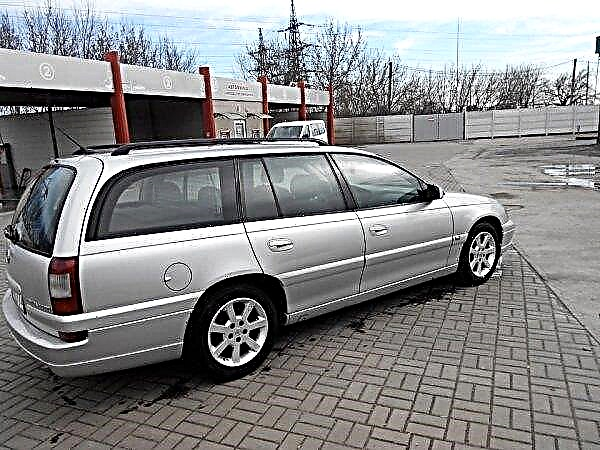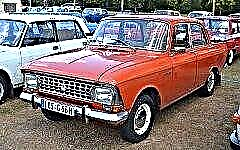

The content of the article:
- Soviet subcompact prototype
- Models and their characteristics
The road of the Moskvich automobile brand started 90 years ago. Officially, the first cars were created at the end of 1946, but this event was preceded by a long history.
Soviet subcompact prototype

In the photo: Opel Kadett K38
In the spring of 1929, an official contract was signed with the Ford auto company. According to this agreement, from the last quarter of 1930 until 1934, the automobile plant named after V. KIM (Communist Youth International) made Ford cars, trucks and cars. The automotive industry in the USSR was not very developed, and the experience of assembling cars according to the drawings of a well-known automobile company was considered useful for studying production technologies.
In the first quarter of 1939, the car plant, by that time renamed the Moscow Automobile Plant named after KIM, began to develop its own small car project. But the plans were thwarted by the war.
It took seven long years before, in 1945, the automobile plant, which by that time had received the name "Moscow Plant of Small Cars", launched the production of a new Soviet car, the founder of which was the "German" Opel Kadett K38.
A decree signed by Stalin in August 1945 contained an order "to expand the production of the Opel Kadett K38 in its current form." Thus, the Soviet small car became an almost complete copy of the German car model.
Until now, among fans of the history of "Moskvich" there are two versions of the history of the plant's development. According to the first version, after the war, almost all factory equipment, conveyor lines and technical documents with drawings of the Opel Kadett K38 were removed from the city of Rüsselsheim to Moscow for reparations.
Opponents of this version claim that only a few copies of the car itself were at the disposal of Soviet designers, and the construction of the plant, the development of the necessary equipment and technical documentation were already carried out in Moscow, by our specialists.
This version is described in his memoirs by Alexander Andronov, who in those years was the chief designer of the MZMA. According to his recollections, the equipment for the plant was assembled from trophy, lend-lease and his own. In the conditions of post-war devastation, the production of cars was established in just two years.
Moskvich models and their characteristics
Models 400 and 401

In the photo: model 401
The first model of "Moskvich" in the sedan body was produced for nine years - from 1946 to 1954. In fact, the model became the first passenger car for individual use in the history of the Soviet Union.
The car was equipped with an M-400 engine and a three-speed manual gearbox. The retail price of the car was 8,000 Soviet rubles (with an average salary of those times of 600 rubles). During this period, the plant produced about 216 thousand sedans from its assembly line.
There were minor differences between the Moskvich and Opel: the Moskvich was not equipped with turn signals at all, while the German had semaphore indicators.
It is significant that in the Soviet first-born MZMA there was not a single component labeled "Opel" - all of them were already marked with domestic brands.
Some cars of the first models have survived to our time. Even without restoration, their quality can be assessed - the thick, durable metal has survived, despite the harsh winters and reagents on the roads. Only the thresholds suffered insignificantly, but with a skillful restoration, this is a fixable thing.
There are examples that were on the move until the middle of the two thousandths and have a range of hundreds of thousands of kilometers.
The car inside is not very comfortable, since there is not enough space in it by today's standards. But the engine starts easily, runs quietly, has excellent traction. The padded suspension springs make the ride feel odd, swaying too much from side to side.
Driving is easy, but drum brakes do not have a booster, and it takes a lot of effort to apply pressure.
A distinctive feature of the plant's work was the technology of stage-by-stage modernization. Serial cars of different years of production are insignificant, but differ from each other. That is why it is sometimes difficult to understand the lineup of "Muscovites".
Specifically in the 400 model, the following changes have occurred over the years of production:
- 1951 - transfer of the speed switch under the steering column;
- 1954 - replacement of the engine with a more powerful 26 hp engine.
In this modified form, the car became known as "Moskvich-401" and was produced almost until the last quarter of 1956.
Model 402

This model replaced the 400 and 401 models in 1956. The car retained from its predecessors the gearbox, engine and axle reduction gear. An interesting fact is that the designers created the body of this car, as they say, "from scratch", not engaging in sighting copying of any foreign analogue.
However, the body did not differ in excessively avant-garde contours - it was created, as they say, "in the spirit of the times." Perhaps that is why the model has a certain similarity with the GAZ-21, which was developed in the same years by the same designers.
The new model of "Moskvich" received an additional volume of space inside the cabin. Also, the car was equipped with a stove, which turned out to be very relevant for the winter realities.
Even the basic equipment of the car included a radio, which was not typical for other models of that era - electronics were expensive, and, as a rule, were not included in the basic equipment.
The 402 had a smoother ride without the wobbling of its predecessors. The engine power was only 35 hp.
Later, the designers made changes to the engine, increasing its volume to 1358 cubic centimeters and "squeezing" 45 hp out of the unit. The car with the updated engine received the 407 marking.
Model 407
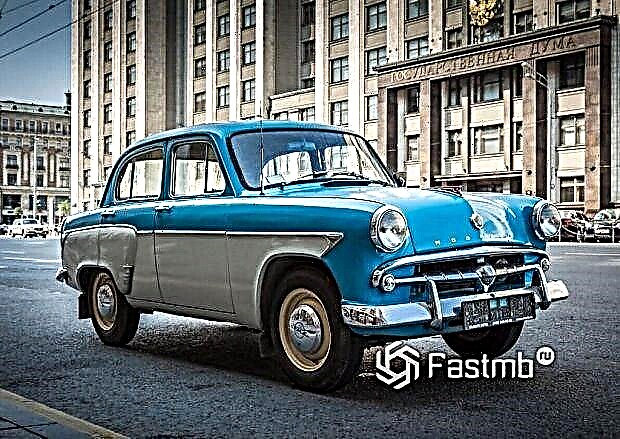
This model went down in the history of the Soviet automobile industry by the fact that it was sold not only for domestic use, but also for sale abroad. More than half of the 407 Moskvich models leaving the assembly line went abroad.
Unfortunately, this model, which brought much-needed foreign exchange to the state, cut down the production of 410 and 411 all-wheel drive models. All-wheel drive vehicles were needed in rural areas, but, alas, they were discontinued in order to get additional capacity for the export-going Moskvich - 407 ".
Sixties: Models 408 and 412

In the photo: model 412
The era of space exploration has left its mark on the automotive industry - all over the world, car models have become more streamlined, with the features of airplanes and rockets. Suffice it to recall the Cadillacs with their large "fins".
The new model of "Moskvich" did not stay away from fashion trends, acquiring "fins" at the back and "getting close" to the streamlined body contours.
The 408th model was first assembled in 1967. In the first vehicles of this series, the double-leaf luggage compartment door opened up and down. Five years later, this door was replaced by a conventional one that only opens upwards.
In the same year, the production of the 412 model began, equipped with an engine that was created on the basis of the M-10 BMW (fortunately or unfortunately, many models of the Soviet automobile industry are replete with tracing foreign developments). The engine with a volume of 1490 cubic centimeters could deliver power up to 75 hp.
The 412th model had a number of modifications:
- 412-U - designed for hot climates;
- 412-E - option for export;
- 412-P - with a steering wheel located on the right;
- 412-M - for medical needs;
- 412-T - taxi model;
- 412-I - with improved quality of the passive safety system.
It was the success of the 412th model that allowed the plant to carry out a large modernization. New equipment was purchased abroad, plans were made to release new successful models. But in the seventies, the 412th model became obsolete and lost demand in export markets.
Models 415 and 416: High flotation

In the photo: model 416
Despite the fact that the all-wheel drive models 410 and 411, developed at the plant, did not receive mass production, the idea of creating a full-fledged subcompact off-road vehicle was waiting in the wings.
In 1958, the Moskvich-415 with a canvas top and the Moskvich-416 with a metal roof were designed. Both models are two-door, based on a rigid spar frame.
Model 423
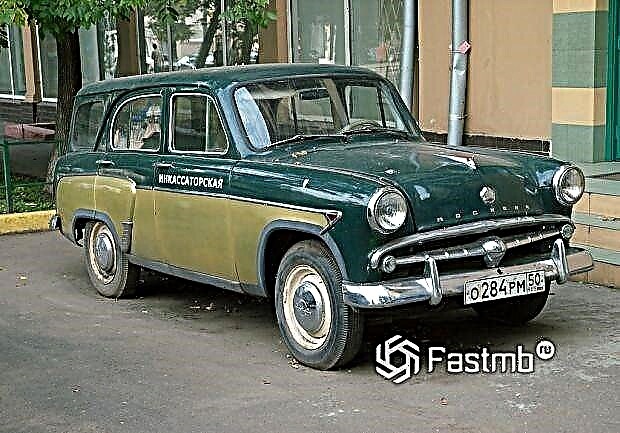
In 1957, the automobile plant produced the Moskvich-423 model, which was the first five-door station wagon. This model was designed on the basis of the 402 model and was distinguished by a large trunk volume: with the rear seats folded, its length was 1.475 m, width - 1.22 m.
Model 427

In 1967, the 427 was released - a new station wagon based on the 412 engine and the 426 body. This car took part in the 1970 London-Mexico international rally. The 427th model was produced until 1976.
Vans 433 and 434

In the photo: model 433
Vans were in demand and were produced in various modifications. The base for the 433 model, which "started" in 1966, was the 408. A characteristic feature of this car were corrugated panels instead of second-row windows and one-piece rear fenders.
"Moskvich - 433" was produced, in addition to the basic modification, with the letters "U" (for hot climates), "E" (for export) and "P" (with a steering wheel on the right side).
The 434 was almost the same as the previous van with the only difference that it had a more powerful engine, which was also used on the 412.
Model 444
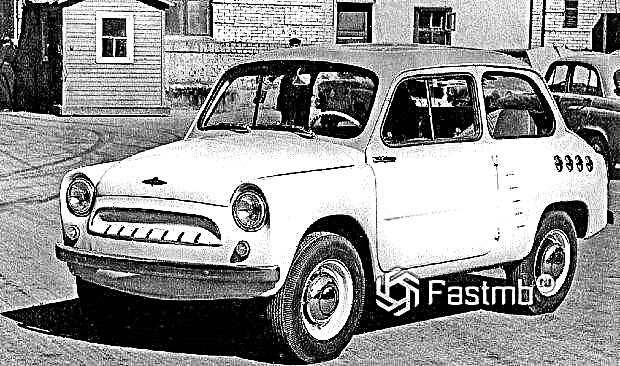
This model was basically the same as the Italian Fiat-600 model. At the beginning of 1957, the first cars of the series were produced, equipped with a 650 cubic centimeters engine.
In 1959, the designers of the Zaporozhye Automobile Plant joined the work on the model, and soon the project was completely transferred to the Zaporozhye engineers, who eventually created the Zaporozhets "ZAZ - 965" on these materials.
Model 2140: Reystyling 412

Model 2140 appeared in 1976. In fact, it was a restyling of the 412th model. On the same technical basis, the body design and interior were changed. The model was made taking into account the requirements of the safety standards that existed in those years: soft plastic on the side panel, the steering column folded upon impact. The dashboard was backlit, and chrome trim elements appeared in the cabin.
Unfortunately, the success of the 412th model "Moskvich - 2140" was not to be seen. Limited demand in foreign markets has shown that it is necessary to look for new solutions.
The failure was also marked by the fact that during this period there was a change in the management of the plant, including the retirement of the chief designer of the enterprise, the permanent professional creator of cars since the forties, Alexander Andronov. The crisis at the plant became protracted, and the new management was unable to cope with it.
Model 2141 - the station wagon of the USSR, which did not survive the collapse of the country

"Moskvich - 2141" appeared in 1986, 10 years after the hatchback Simca - 1308, which served as the basis for the developers of "Moskvich", was released. When the 2141 was released, it had the already outdated Ufa motors 408 and 412 at that time, which was the main drawback of the new model.
The handling was not the best either: the heavy front part of the front-wheel drive model made the car more inertly responding to steering movements, the car had a tendency to drift the front axle.
Also, the image of the model was spoiled by a poor-quality assembly, which allowed many cracks, and an unassuming finish. Even in the Soviet domestic market, the car was not in high demand.
Nevertheless, the model had prospects, and the factory team was constantly working to improve it. After the purchase of imported equipment, the plant was 90% ready for launch, but then perestroika broke out, and the country collapsed. An attempt to install an engine from Renault in the model failed after the default of 1998, and they stopped buying Moskvich altogether.
The plant, which had been producing the famous "Muscovites" for so many years, finally collapsed in the first year of the XXI century. The conveyor stopped, went through bankruptcy proceedings. Now Renault models are assembled in this territory: Duster and Sandero.



